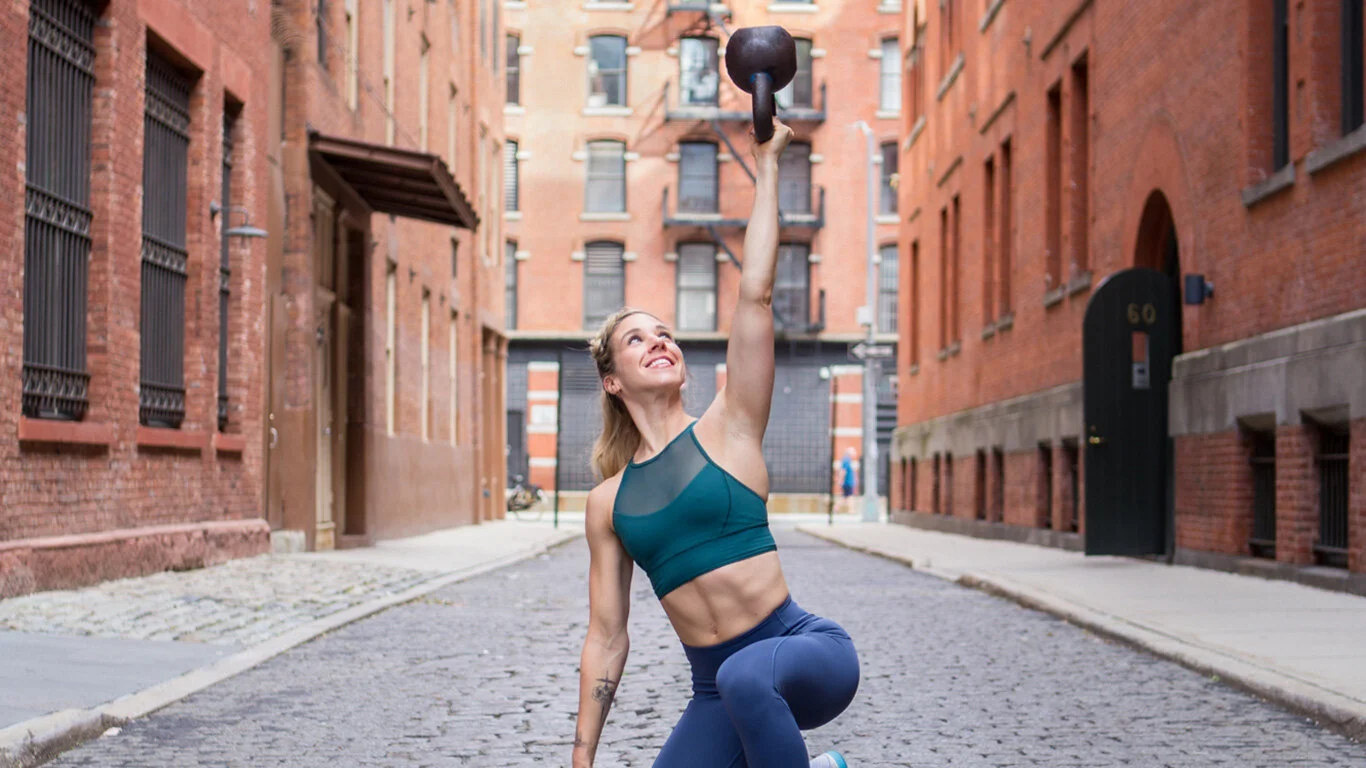5 of the biggest kettlebell mistakes — and how to fix them
A series of kettlebell exercises strung together into a circuit can be a beautiful thing to watch and an empowering thing to do. But learning the art of kettlebell training initially may come with some awkwardness.
To ease any apprehension you may have, Lacee Lazoff, the creator of Bells Up on NEOU, breaks down five common kettlebell mistakes - and how to fix them.
1. Allowing the wrists to “break”
A wrist “break” is where the heavy part of the kettlebell falls off to one side and your palms face upward, says Lacee. According to her, when the wrist breaks you’re not in a strong or stable position to perform an exercise. To avoid the wrist break, you should always start light and allow your wrist to get strong enough to hold it vertically. If resting the kettlebell on your wrist is painful, she also suggests using a wrist guard.
2. Flaring the elbows out
Lacee says that to protect yourself during any exercise you need to engage your core muscles as much as possible. If you’re flaring your elbows with kettlebells, or what she likes to call, “chicken wings,” you’re putting a strain on your shoulders and neck, she says. This is a clear sign that the kettlebell is most likely too heavy for you. “Your elbows should always be locked in tight to the body as much as possible.”
3. Holding a kettlebell with an open grip
The trick to exercises like swings and snatches comes down to knowing how to create tension, allow for a slight release, then create tension again, says Lacee. There should be tension at the start of the exercise, release while the bell is in motion, then tension again at the end. “An open hand means you’re not fully under tension, but we want to maximize that tension,” she says.
4. Sinking too low during swings
The kettlebell swing works pretty much every muscle in the body, but poor mechanics can easily put your low back at risk. Lacee’s tip for clean mechanics is all about kettlebell placement. “To save your lower back when you’re in the bottom of your swing you never go below your knees,” she says. When the kettlebell is too low your back tends to round out, and as a result, place more strain on your low back.
5. Not “locking out” when overhead
When it comes to kettlebell presses, your arms should always be as straight as possible and shoulder blades packed down. “Any elbow bend while overhead is very risky for the shoulder, neck, and back,” Lacee says. To properly execute, press the bell up, hold overhead for a brief second, then return it smooth and controlled.






